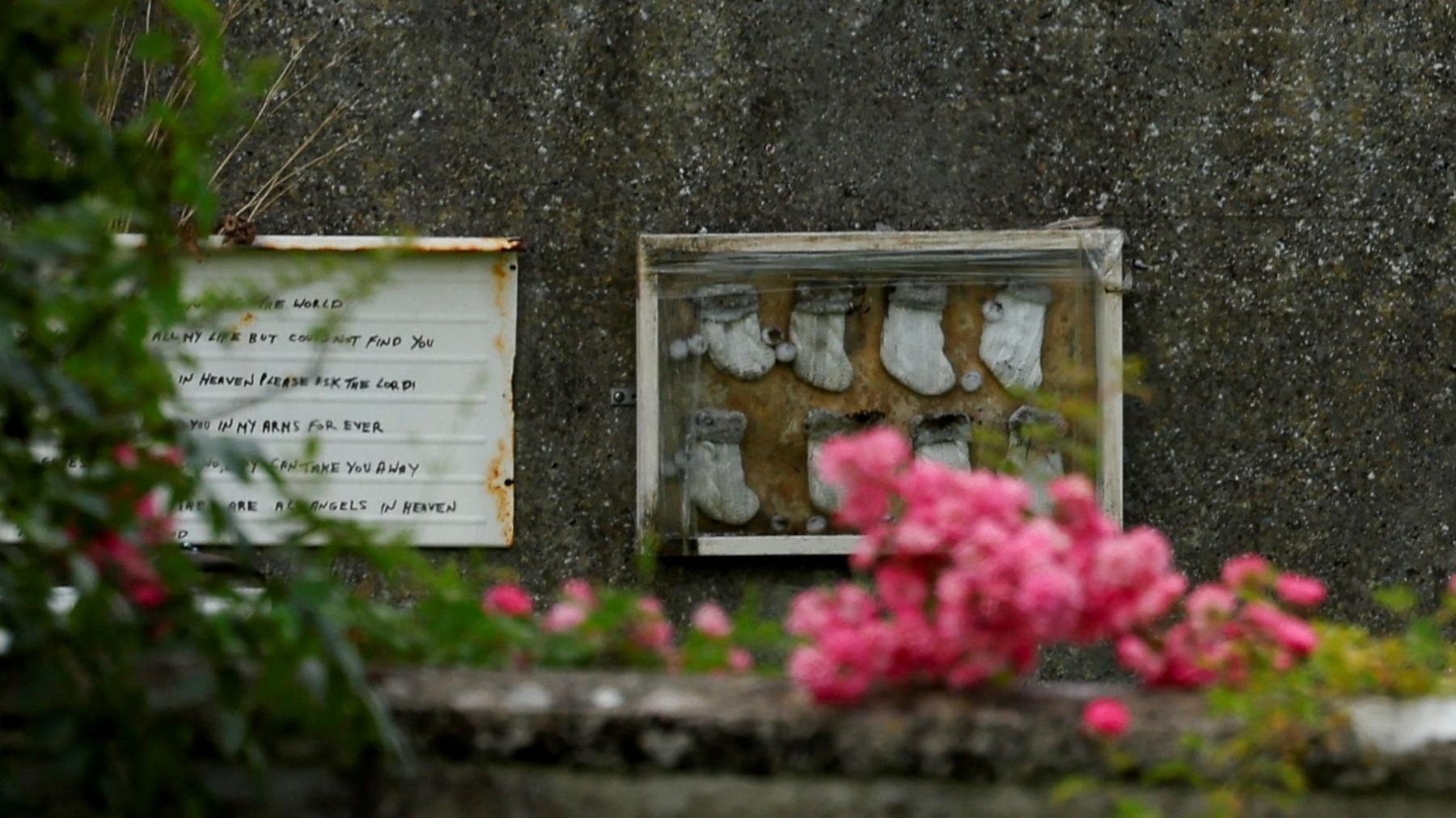Personal items found at mass burial site
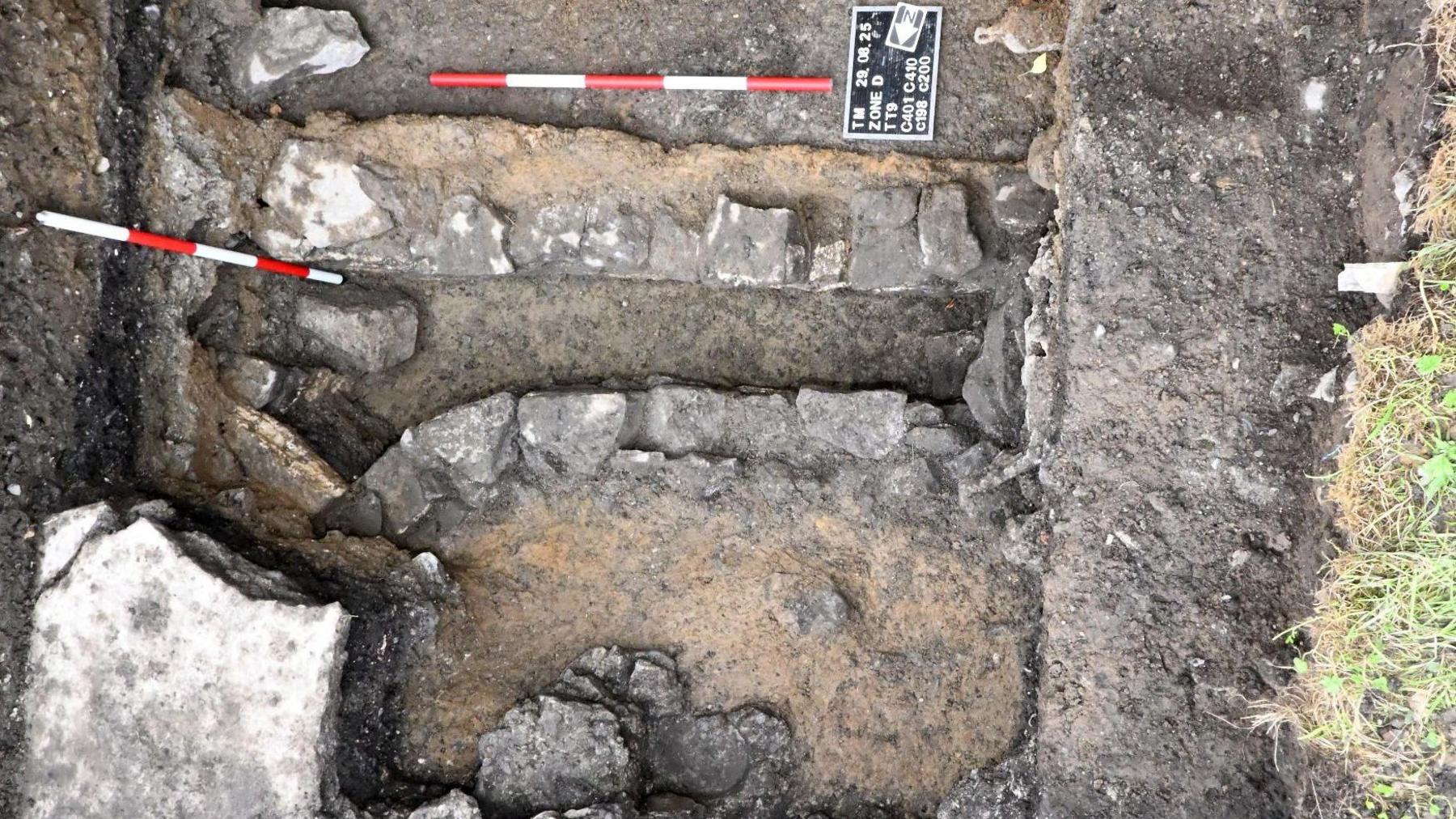
Excavators uncovered a pathway at the site
- Published
The team which is excavating the site of the former mother-and-baby institution at Tuam in County Galway have found more personal items dating from the time it was operating.
The agency has published its second monthly update on the work, which is aiming to find and identify the remains of children and babies which are believed to be in a mass grave.
Archaeologists have discovered five sets of skeletal human remains which are thought to date from the period before the mother-and-baby institution was open.
A workhouse was on the site from 1841 until 1918.
The agency known as the Office of the Director of Authorised Intervention, Tuam (ODAIT) has said it is co-operating with the National Museum of Ireland, which is the authority with responsibility for historical human remains.
The skeletons were recovered during hand excavations near the 19th-century boundary wall.
ODAIT began excavating the site of the former St Mary's mother-and-baby institution in July.
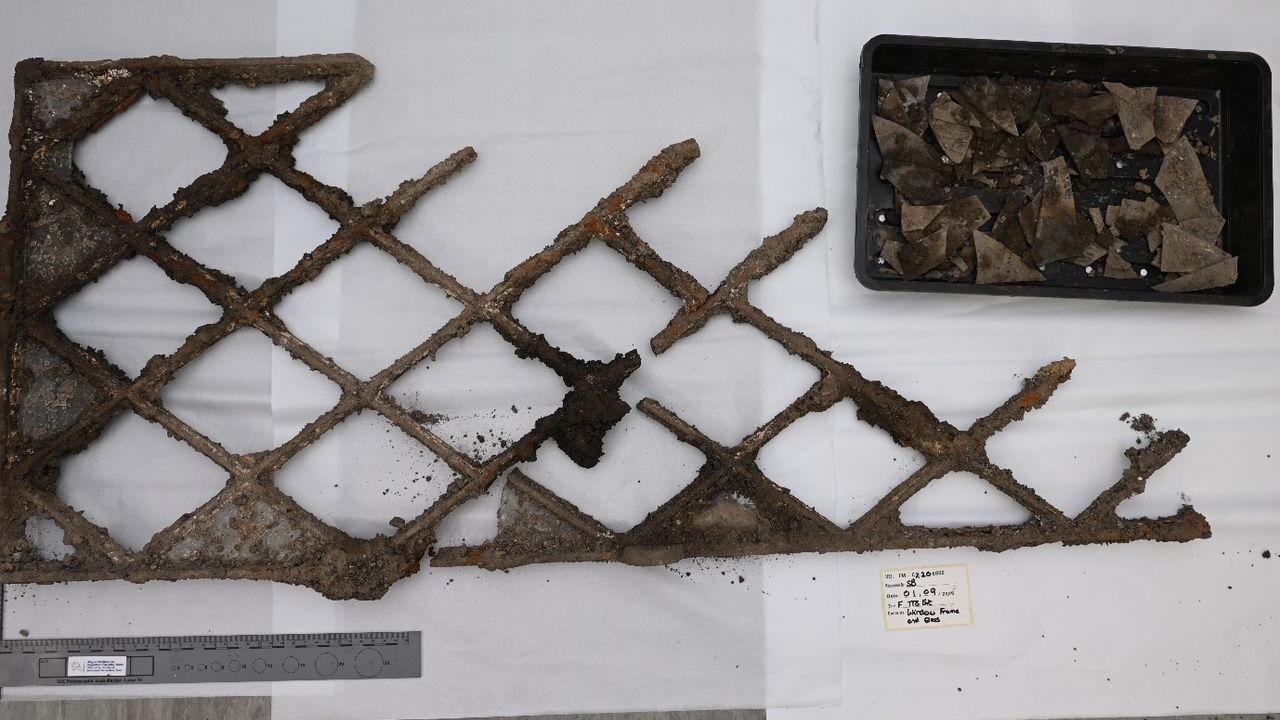
Excavators also found a window frame during the work
In its first update, published around a month ago, ODAIT said it had found shoes, spectacles and baby glass bottles from the years the institution was operating.
The new report covers ODAIT's work for the month up to the 24 September.
It says the team recovered further personal and medicinal items from what is categorised as the "institutional era".
Excavators also found a window frame.
They have uncovered a pathway, two drains, and what they describe as an "underground vaulted structure" comprised of at least three chambers.
It is not the same structure where the remains were found in 2017.
ODAIT has previously indicated it does not expect to find children's remains until a later stage in the excavation.
'Significant quantities of human remains'
The institution for unmarried mothers and their children opened in 1925 and closed in 1961.
It was owned by Galway County Council and run by a religious order, the Bon Secours Sisters.
The story came to international attention in 2014 after local historian Catherine Corless found evidence of a mass grave at the site when she discovered there were 796 death certificates for children and babies who died there, but no burial records.
In 2017 investigators from an inquiry set up by the Irish government said they had found "significant quantities of human remains" in underground chambers.
Related topics
- Published13 January 2021
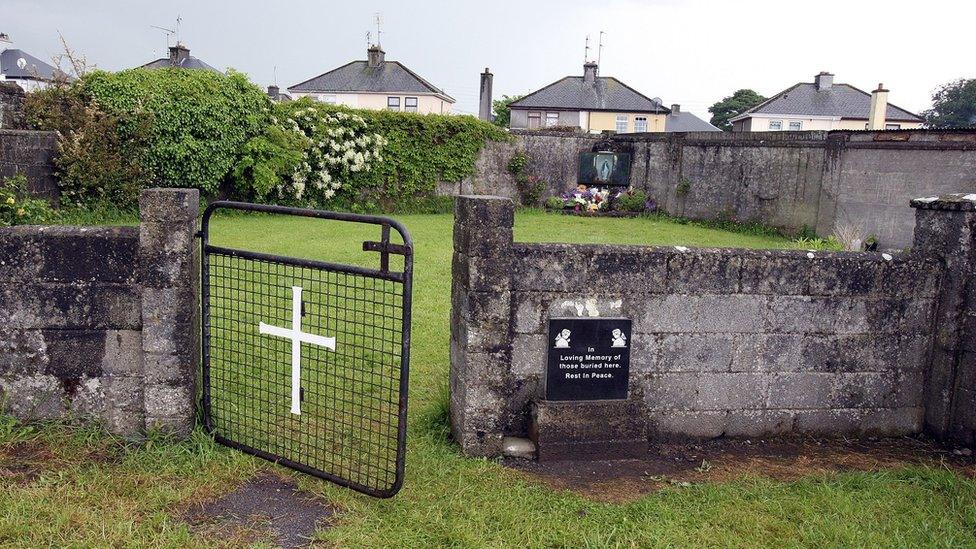
- Published4 March 2017
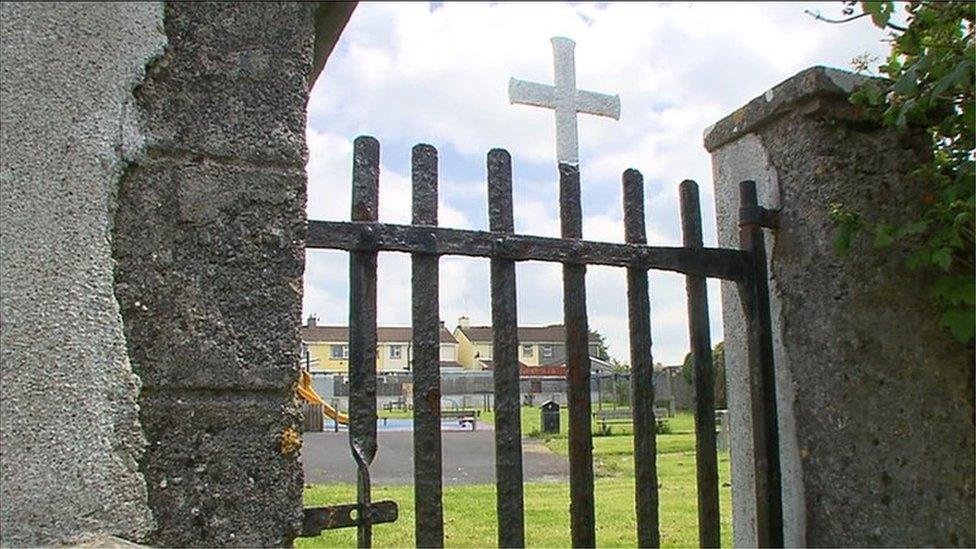
- Published14 July
